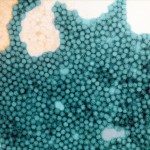Link to Pubmed [PMID] – 9531008
J. Neurovirol. 1998 Feb;4(1):1-26
Poliovirus (PV), the pathogenic agent of paralytic poliomyelitis, is the prototype of the picornavirus family. Although paralytic poliomyelitis has been nearly totally eradicated in most industrialized countries, PV continues to be an important public health problem in many developing countries. Moreover, in industrialized countries, two current concerns are the occurrence, albeit at a very low frequency, of vaccine-associated paralytic poliomyelitis, due to the genetic instability of the attenuated oral PV strains in vaccines, and the emergence of a neuro-muscular pathology in many survivors of the acute disease, called the post-polio syndrome. PV has been targeted by the World Health Organization for world-wide eradication in the coming decade and continues to be the subject of intensive research. The advances made in the molecular biology of PV, taken together with the development of new animal and cell models, have permitted a new look at a key step in the pathogenesis of poliomyelitis, i.e. the interactions between PV and nerve cells. These aspects of PV biology are developed in this review according to three themes: (i) the PV host range; (ii) the molecular determinants of PV neurovirulence and attenuation; and (iii) the persistence of PV in nerve cells, which has proven to be an interesting new domain in the field of PV research.
